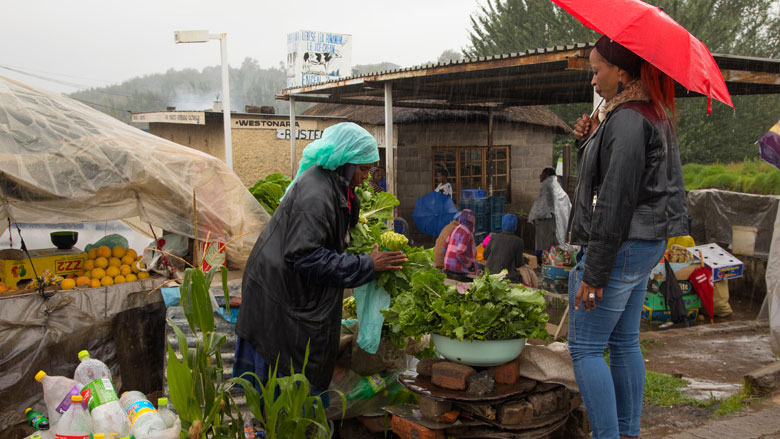In Lesotho, an Economic Inclusion Initiative is Providing Hope and Jobs to the Most Vulnerable – World Bank

Economic Inclusion Program in Lesotho: Advancing Sustainable Development Goals

Addressing Poverty and Economic Vulnerability
Lesotho continues to face persistent high poverty rates, with many social safety net beneficiaries trapped in economic vulnerability. The Economic Inclusion Program (EIP) has been introduced as a strategic initiative aimed at breaking this cycle. This program aligns with several Sustainable Development Goals (SDGs), particularly:
- SDG 1: No Poverty
- SDG 8: Decent Work and Economic Growth
- SDG 10: Reduced Inequalities
The EIP provides a structured, multi-faceted approach that enables participants to combine social assistance with economic inclusion activities. Through comprehensive training, productive grants, coaching, and market linkages, the program equips beneficiaries with the necessary tools to build sustainable livelihoods.
Case Study: Empowering Women Entrepreneurs in Mafeteng
Located 76 kilometers from Maseru, the capital city of Lesotho, Mafeteng hosts participants of the EIP who have benefited from the program’s initiatives. Mme Ramolahloane, a resident of the village of Ts’akholo in the Metsi-Maholo Community Council, exemplifies the program’s impact.
- Training and Capacity Building: Mme Ramolahloane completed six months of training focused on financial literacy and personal initiative, delivered through the partnership between the Government of Lesotho and the World Bank.
- Business Development: Leveraging her understanding of the local community, she developed a business proposal to establish a poultry enterprise, specifically raising broilers.
- Financial Support: She received a one-time productive grant of M5,000 ($268) through the Pathways to Sustainable Livelihoods Project (PSLP), which supports the EIP.
Impact and Future Prospects
- Enhanced Business Skills: Mme Ramolahloane reports feeling more equipped to manage her business, attributing this to the training and the support network of like-minded women.
- Economic Empowerment: By building a successful poultry business, she aims to provide a stable foundation for her three children, contributing to SDG 4 (Quality Education) through improved household stability.
- Market Awareness and Diversification: The training included insights into market seasonality, enabling her to plan for business diversification to ensure sustainability.
Conclusion
The Economic Inclusion Program in Lesotho demonstrates a practical application of the Sustainable Development Goals by addressing poverty, promoting decent work, and reducing inequalities. Through targeted training, financial support, and community engagement, the program fosters sustainable livelihoods and economic empowerment, particularly for vulnerable populations such as women entrepreneurs.
1. Sustainable Development Goals (SDGs) Addressed or Connected
- SDG 1: No Poverty – The article discusses persistent high poverty rates in Lesotho and efforts to break the cycle of economic vulnerability through the Economic Inclusion Program.
- SDG 2: Zero Hunger – The focus on setting up a poultry business relates to improving food security and sustainable agriculture.
- SDG 4: Quality Education – The training in financial literacy and personal initiative provided to beneficiaries supports inclusive and equitable quality education and lifelong learning opportunities.
- SDG 8: Decent Work and Economic Growth – The program promotes productive employment and entrepreneurship through training, grants, and market linkages.
- SDG 5: Gender Equality – The article highlights women’s empowerment through participation in the program and business development.
2. Specific Targets Under Those SDGs Identified
- SDG 1 – Target 1.2: Reduce at least by half the proportion of men, women and children living in poverty in all its dimensions according to national definitions.
- SDG 2 – Target 2.3: By 2030, double the agricultural productivity and incomes of small-scale food producers, particularly women.
- SDG 4 – Target 4.4: Increase the number of youth and adults who have relevant skills, including technical and vocational skills, for employment and entrepreneurship.
- SDG 5 – Target 5.a: Undertake reforms to give women equal rights to economic resources, including access to ownership and control over land and other property, financial services, inheritance, and natural resources.
- SDG 8 – Target 8.3: Promote development-oriented policies that support productive activities, decent job creation, entrepreneurship, creativity and innovation.
3. Indicators Mentioned or Implied to Measure Progress
- Proportion of population living below the national poverty line (related to SDG 1.2) – implied by the focus on reducing poverty and economic vulnerability.
- Number of beneficiaries trained in financial literacy and entrepreneurship (related to SDG 4.4 and 8.3) – implied by the training programs described.
- Number and value of productive grants disbursed (related to SDG 8.3 and 5.a) – indicated by the mention of the M5,000 grant to Mme Ramolahloane.
- Increase in income or business establishment among participants (related to SDG 2.3 and 8.3) – implied by the success story of the poultry business.
- Participation rate of women in economic inclusion programs (related to SDG 5.a) – implied by the focus on women entrepreneurs and networks.
4. Table: SDGs, Targets and Indicators
| SDGs | Targets | Indicators |
|---|---|---|
| SDG 1: No Poverty | Target 1.2: Reduce by half the proportion of people living in poverty. | Proportion of population living below the national poverty line. |
| SDG 2: Zero Hunger | Target 2.3: Double productivity and incomes of small-scale food producers. | Increase in income or business establishment among participants in agriculture-related activities. |
| SDG 4: Quality Education | Target 4.4: Increase number of youth and adults with relevant skills for employment. | Number of beneficiaries trained in financial literacy and entrepreneurship. |
| SDG 5: Gender Equality | Target 5.a: Equal rights to economic resources for women. | Participation rate of women in economic inclusion programs; number and value of productive grants disbursed to women. |
| SDG 8: Decent Work and Economic Growth | Target 8.3: Promote policies supporting productive activities and entrepreneurship. | Number of beneficiaries trained; number and value of productive grants; increase in business creation and income. |
Source: worldbank.org








